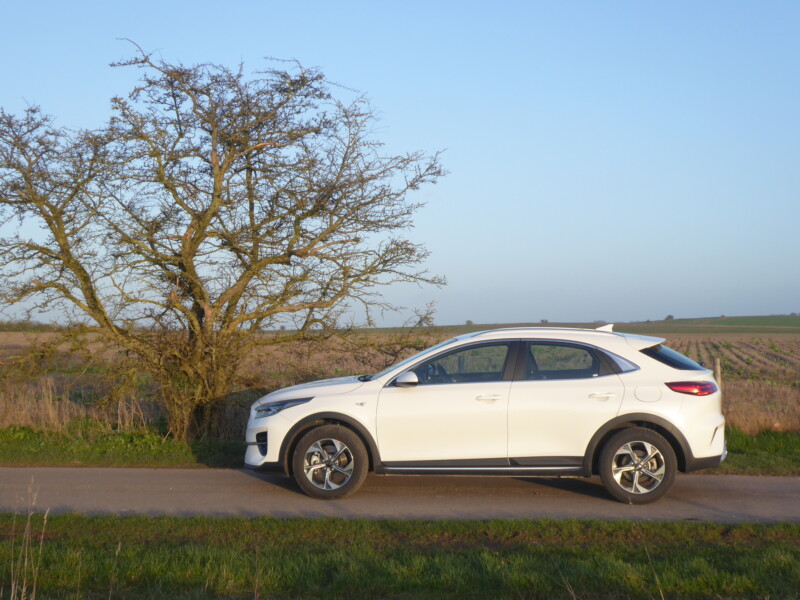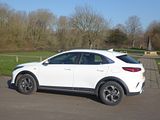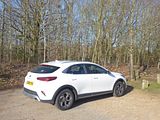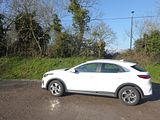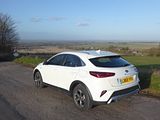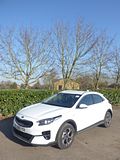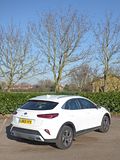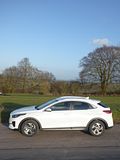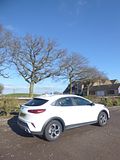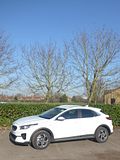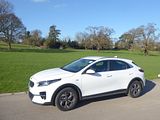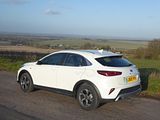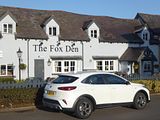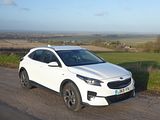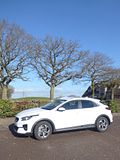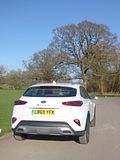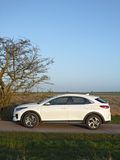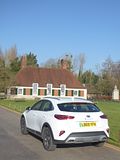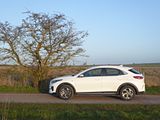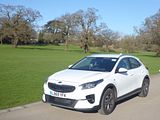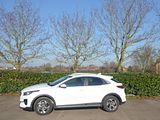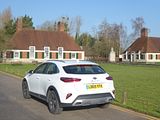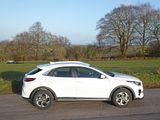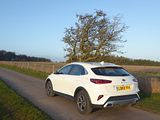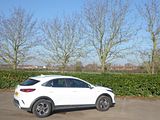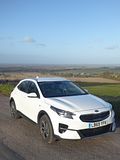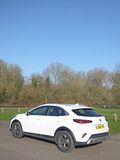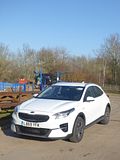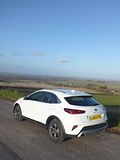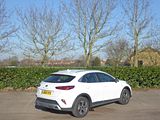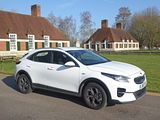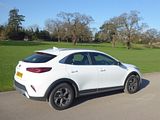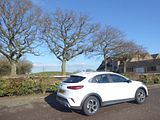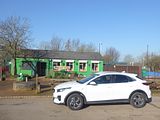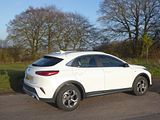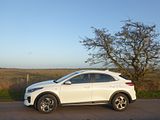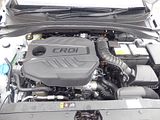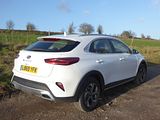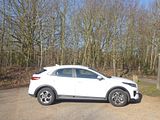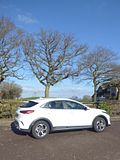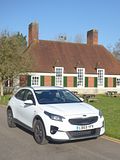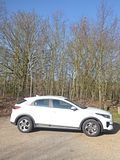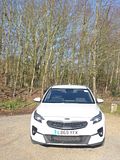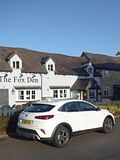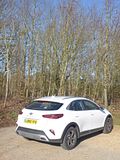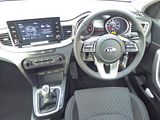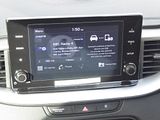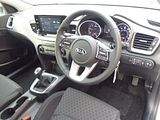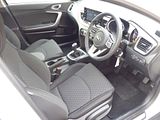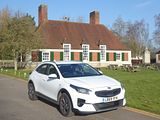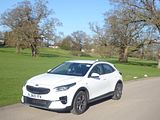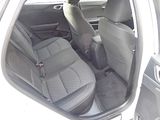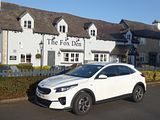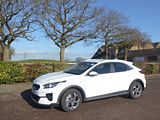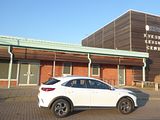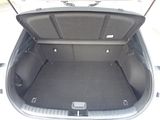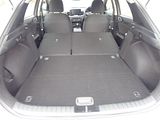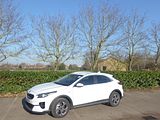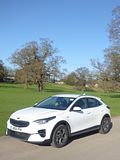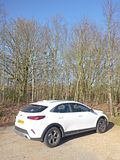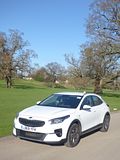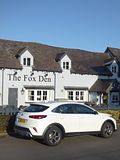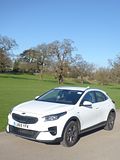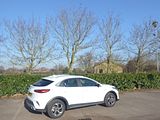When it comes to choosing your car. for many people, there would seem to be a deeply ingrained desire to stand out from the crowd a little and to have something that is a bit different. Pre-war, of course, this was easily achieved, for those who had the means, as most high-end cars were supplied by the factory simply as a chassis and engine and the buyer then needed to engage their favourite coachbuilder who would them create something bespoke. But not everyone could afford that and so, most especially in the post war world, manufacturers resorted to a number of different trim levels, which were usually clearly badged so everyone could see who had the poverty spec model and who had splashed out for the top spec car. It was perhaps Ford’s Capri, the “car you always promised yourself” which really set the benchmark for personalisation with a vast model range of different engines and trim levels as well as a series of option packs that buyers could select from to end up with a truly individual product despite the fact that the underlying car was mass-produced. That was in the era when car manufacturers only offer a small number of basic model types, but in the last 20 or so years, with the advent of platform sharing and in the era of mass personalisation, there’s far more choice of the basic car even before you specify the colour, the specific model trim and make your choice from a long (and often costly) options. This approach has led to an almost unimaginable list of niche models being produced, some with more appeal than others. It does not take much for the new niche of one brand to become a whole market segment populated with an array of competing models, as we have seen with the seemingly unstoppable rise of the Crossover and more recently with what amounts to a Crossover with some of the practicality lost thanks to coupe styling, something probably kicked off by BMW’s X6 but now widely copied. In late 2019, Kia became the latest in a growing list of manufacturers to go down this route when they introduced their XCeed, as a complementary model to their new third generation Ceed range. True to crossover type, it has a higher ground clearance and is 85mm longer and 43mm taller than the Ceed hatchback, however, with its sloping roofline it sits lower than an SUV, giving the Kia XCeed, so we are told, a dynamic and more distinctive look. The exterior of the Kia XCeed shares only the front door panels with the Ceed hatchback. Face-on, there is a distinct difference between the two models, helped by the longer, taller, sportier bonnet, new dual blade front grille, satin chrome garnish, revised bumper and new LED headlamps. Changes at the rear of the car include a new dynamic bumper, diffuser and new LED lights. The rear proportions give the Kia XCeed a muscular stance on the road. The Kia XCeed also benefits from SUV styling in the form of black wheel arch trims along with unique 16- or 18-inch alloy wheels.
By happy chance, I received a test XCeed from rental car giant, Hertz, at Heathrow airport, as a back-to-back rental with the more traditional estate model, the Ceed Sportwagon, so this would give me the perfect opportunity to make a pretty direct comparison between the two. I was favourably impressed by the Sportwagon, so I was interested whether I would reach the same conclusion about the XCeed and if I could figure out which of the pair I would ultimately prefer.
Mechanically, the XCeed is the same as the regular Ceed, and that includes the engine choices, which amount to either a 1.0 litre or 1.4 litre GDi petrol unit or the Smartstream 1.6 litre diesel with a Plug-In Hybrid waiting in the wings. Just as with my rental SportWagon, so the rental XCceed was supplied with the 1.6 litre diesel unit under the bonnet. It is fired up with a traditional key, still. And when you do start it, the immediate reaction is that this is a much more refined engine even than diesel units of two or three years ago. This one remains civilised and refined at all times, from start up, when accelerating and most especially when cruising at a steady speed on the motorway. It is there where noise levels are particularly low. To some extend that is helped by the gearing. Sixth gear is quite tall and you can just about hang onto it at 50 mph, as you will want to do in those average speed monitored roadworks that are such a feature of our motorways these days. But when you need any meaningful acceleration, you almost certainly will need a downchange. That is no hardship as the change is very slick, with the lever slotting readily and very positively between ratios and the clutch is pleasingly light. First gear is very much one for getting underway but once you are in any of the other ratios the available torque, which is at its peak from 1500 to 2750 rpm, means that there is strong acceleration, which is exactly what is needed. During my test, the XCeed reported an average fuel consumption between 57 and 64 mpg which is impressive and that means that the Kia has a usable range of around 680 miles. I used less than a full tank of fuel, so can never be sure from my own measurements what the true consumption was as rental cars come with varying degrees of “full” fuel tanks. There is a Stop/Start system which no doubt helps in traffic, and it certainly cut in quickly when needed, but I did little of my test mileage in urban conditions.
In other respects, the XCeed was very similar to the Ceed SportWagon to drive. That is no bad thing, as I thought the Ceed was pretty good and it is only the lack of experience of the latest versions of its main rivals that stopped me from asserting that is the best in the class, though others have suggested that this is generally the case. The steering is light but not unduly so and there is some feel as you turn the wheel. The car has predictable front wheel drive handling characteristics, which are just fine for normal motoring. Kia say that despite the slightly higher centre of gravity of the XCeed, the handling is little different to the Ceed and my rather subjective and public road-based tested certainly found that to be the case. The test XCeed came on the smallest available wheels, 205/60 R16 in size, and these plus the suspension, which is slightly softer compared to the Ceed, endow the Kia with a comfortable ride. It is perhaps a little firmer than you might expect but it is definitely not uncomfortable, which is quite a relief considering how many cars now are. The brakes are well up to the task in hand and, just as with the Ceed, there is a pull-up handbrake between the seats, which is always welcome when there is a manual gearbox. Less than welcome were some of the latest safety features. The Lane Keep Assist feature was as annoying as ever, with the system seemingly easily confused by the remains of markings from now completed road works causing particular issues. Visibility is as good as you get in most cars these days with high waistlines and thick pillars. Posher trim versions of the XCeed get parking sensors but on the 2 spec of the test car they are not included but you do get, and indeed need the standard rear-view camera to help judging the back of the car. I did also note that the rear picks up a lot of dirt from the road.
Kia have made huge strides with the quality of their interior in recent years, both in design terms and also for the quality of the materials used. The XCeed exemplifies this, as it is very nicely presented indeed, with plenty of soft touch and quality looking content here, just as is the case with the Ceed. There is a leather-wrapped wheel even on the entry level car and it is pleasant to hold. The instruments are grouped together under a single binnacle but each is set into its own recessed cowl. The larger rev counter and speedometer then contain, respectively, a water temperature and fuel level gauge in their lower portions. There is a digital display area between the two dials with a variety of menus available and easily selected. There are two column stalks, with an auto lights on and auto dip function on the left hand stalk. The steering wheel boss contains buttons for the audio repeater and cruise control. The centre of the dash contains an 8” colour touch screen for infotainment functions and as standard this will work with Apple Car Play and Android Auto. The graphics are crisp and clear and the system was responsive and thankfully there are still some physical buttons for commonly used functions as opposed to everything being driven by the screen. Beneath this unit are the knobs and buttons for air conditioning, not an automated climate control set up in this entry level 2 model.
One claimed reason for selecting the crossover body cited by some buyers is because the appreciate the combination of a slightly elevated driving position and also the extra headroom that the body style endows. And that applies here. There is certainly a feeling of space, though this was not something I thought lacking in the regular Ceed. Seat upholstery is cloth with a variety of patterns used to bring some contrast to it. Seat adjustment is all manual with a height adjuster available for the passenger as well as driver. The steering wheel telescopes over quite a wide range, so there is a driving position to suit everyone readily available here. The seat itself proved very comfortable.
Those in the rear seats get a good deal, too. The raised roof line gives a bit more headroom and legroom, even with the front seats set well back, should suffice for all but the very longest of leg. There is a drop-down armrest with cupholders in the upper surface. Oddments are taken care of in map pockets on the back of the front seats and pockets on the doors.
The boot is not perhaps as generous as you might be expecting, as it is surprisingly shallow, though the actual measurements will tell you it is a little larger than that of the Ceed hatchback. It is certainly a nice regular shape and there are the usual hooks to help secure items in place. There is a space saver under the boot floor and there is a bit of space around it for a few more odds and ends. The rear seat backrests are asymmetrically split and simply drop down to create a much longer load platform. Inside the cabin, there is a big glovebox and there are useful pockets on the door, a cubby under the armrest and there is recess in front of the gearlever for those odds and ends that always need a place.
From launch, the Kia XCeed was available with Kia’s trademark, easy to understand line-up of ‘2’, ‘3’ and flagship ‘First Edition’ models, with both petrol and diesel engines on offer. A seven-speed DCT automatic transmission is available with the 1.4 T-GDi 138bhp engine. The ‘2’ models are comprehensively equipped with 16-inch alloy wheels, silver roof rails, a rear spoiler, a gloss black mesh front grille with satin chrome surround, satin chrome beltline and LED bi-functional headlights, front projection fog lamps, LED daytime running lights and LED rear lights and rear fog lamps. The eight-inch touchscreen features Android AutoTM and Apple CarPlayTM compatibility, together with a reversing camera system. Other equipment includes a leather trimmed steering wheel and gearshift, black premium cloth upholstery, automatic lighting control, electric front and rear windows with front auto up and down functionality, keyless entry, manual air conditioning and cruise control. Lane Keeping Assist (LKA) and Forward Collision-Avoidance Assist (FCA) are both included, with pedestrian detection functionality available as part of the optional Advanced Driving Assistance Pack. Move up to level ‘3’ and there’s 18-inch alloy wheels, privacy glass, electric and heated, wide, folding door mirrors with side repeater and a window defogger. Step inside and there’s the new 10.25-inch navigation system with telematics, black cloth and part faux leather seat upholstery, heated front seats and steering wheel, dual-zone climate control, an electric park brake and rear auto up and down functionality for the electric windows, as well as a smart key and button start. The centre console features a sliding storage box for extra versatility and pedestrian detection is added to the Forward Collision-Avoidance Assist (FCA) system on manual models and is an optional extra for DCT versions. The top-of-the-range ‘First Edition’ models are fitted with a panoramic sunroof, a dark chrome mesh radiator grille with satin chrome frame and black gloss mirror caps. On the safety front there’s Forward Collision-Avoidance Assist (FCA) with pedestrian detection, Smart Cruise Control on DCT versions, Blind Spot Collision Warning (BCW), Intelligent Speed Limit warning and a high line Tyre Pressure Monitoring System (TPMS) with tyre pressure display. Cloth and part faux leather seat upholstery with exclusive yellow detailing makes a cutting dash, with a power operated driver’s seat with memory and lumbar support. The instruments are upgraded to a 12.3-inch TFT supervision cluster display, there’s a smart power tailgate, JBL® premium sound system, wireless phone charger, aluminium pedals and 40:20:40 split folding rear seats.
No doubt, the XCeed is a good car. It drives well, with respectable performance and excellent economy and is comfortable on a long journey. The interior is finished to a high standard and equipment levels are generous. But then this is all true for the regular Ceed hatch and the SportWagon, so one does have to ask the question about why you would buy an XCeed, given that you trade some space and practicality and pay more for the privilege. I guess the answer to that is the same as always applied to those who bought the coupe version of a family car a few years ago. They simply wanted something that stood out as a bit different but which remained affordable enough. So think of the XCeed as the modern equivalent of a coupe and it starts to make sense. And if you want a car of that category, then there are not currently that many alternatives at this price point, but even if there were, the Kia would be easy to recommend.

